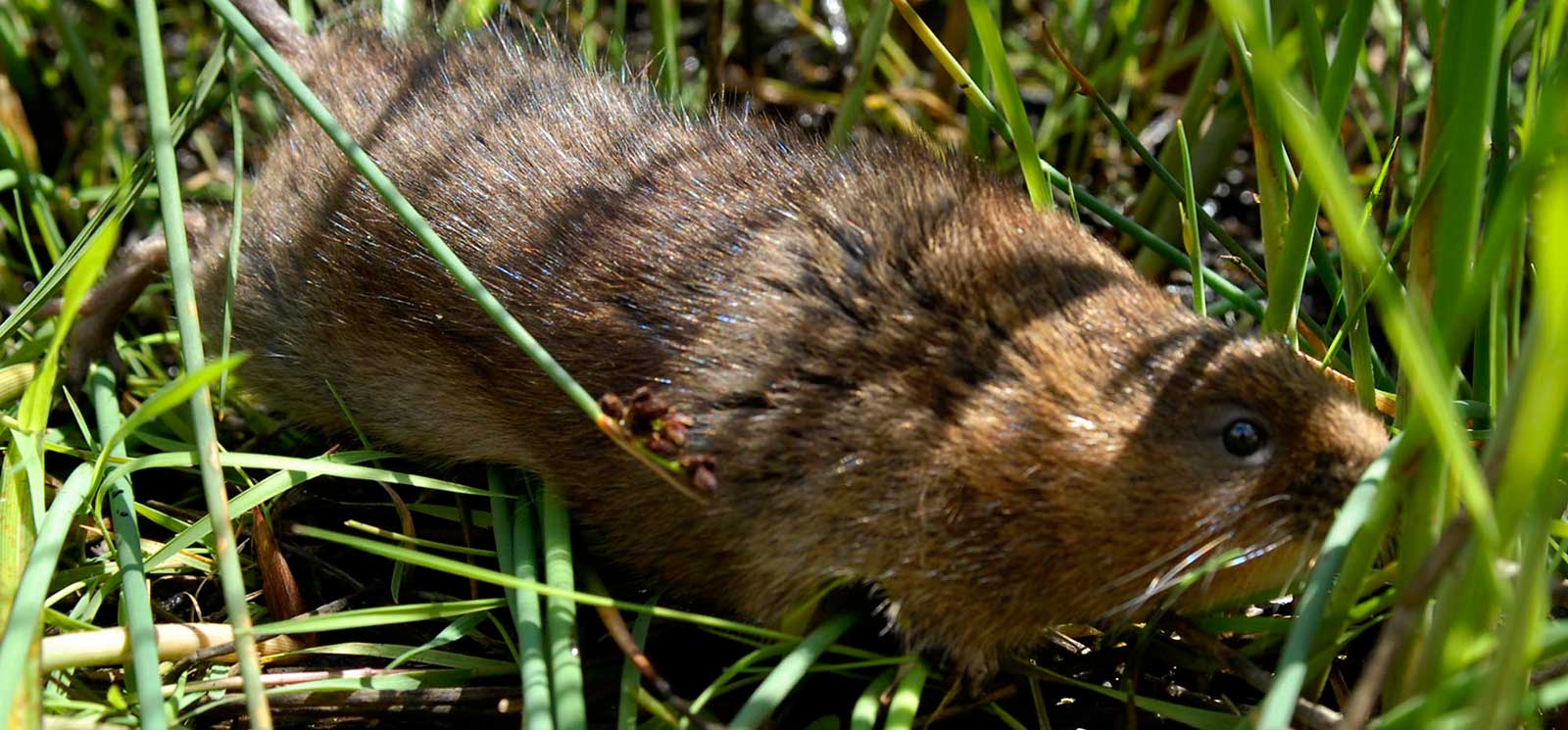
Saving water voles
Once one of the UK’s most common rodents, water vole numbers have plummeted over the last 60 years from around 8 million to just 750,000. Unsympathetic farming and water management have been factors, but nothing has been so damaging to the species as the presence of the non-native American mink.
The problem – mink
 Mink were released or escaped from fur farms in the 1950s, bred prolifically and preyed on birds and mammals with alarming efficiency. They live and hunt near water and can swim well, resulting in them becoming the main predator of the water vole. One female mink can penetrate a water vole’ burrow with catastrophic consequences, wiping out whole colonies in one fell swoop. Previously, water voles could escape from their predators (weasels and stoats) by swimming.
Mink were released or escaped from fur farms in the 1950s, bred prolifically and preyed on birds and mammals with alarming efficiency. They live and hunt near water and can swim well, resulting in them becoming the main predator of the water vole. One female mink can penetrate a water vole’ burrow with catastrophic consequences, wiping out whole colonies in one fell swoop. Previously, water voles could escape from their predators (weasels and stoats) by swimming.
Projects to control mink are therefore enormously beneficial to water vole numbers, as well as other species.
BASC members have taken up the fight against this invasive alien species by participating in projects to monitor and remove mink. These projects see shooters giving up their free time to work with local communities and conservation partners, demonstrating the passion BASC members have for the environment.
Previous success
A successful project ran for over 10 years (2002 onwards) in the South West. This involved a network of volunteers controlling mink from the Bristol Channel all the way to the South Coast across the Somerset Levels, as a result protecting water voles in the area and isolating the West Country from further invasion by mink.
These efforts were recognised by the Water Vole UK steering group and by the Environment Agency.
Current projects
 BASC runs free mink control courses in five areas – four locations in Ceredigion and one in Gwynedd. Current work includes the monitoring and removal of mink in these areas by trained volunteers, hence improving the habitat for water vole.
BASC runs free mink control courses in five areas – four locations in Ceredigion and one in Gwynedd. Current work includes the monitoring and removal of mink in these areas by trained volunteers, hence improving the habitat for water vole.
The current ‘Resilience for Natives’ projects, funded by Natural Resources Wales (NRW), and supported by The Wildlife Trust of South and West Wales and Bangor University, relies on loaned rafts and traps and a network of volunteers who are trained to use them. In addition to practical measures on the ground, vital research is being conducted into mink diet and the prevalence of water voles.
Hamish Profit, BASC biodiversity officer Wales, is currently co-ordinating a team of volunteers adjacent to the Menai Strait. “There is a robust population of water voles on Anglesey that are potentially under threat from mink – to them, the water is no barrier. Efforts centre on controlling the mink on the mainland to protect the island’s population. Over the next couple of weeks, camera traps will be set in the area in the hope that the elusive water voles can be photographed.”
As the project nears completion, efforts will focus on collating and reviewing the findings. BASC will review the research and examine how well the efforts of a cohesive network of volunteers have improved the environment for conservation good.
More information on the project can be found by clicking here.
If you would like to take part, contact Hamish Profit, Derek Williams in North Wales or Meurig Rees in Mid and South Wales. Their contact details can be found by following the link above.
© Images: Environment Agency
